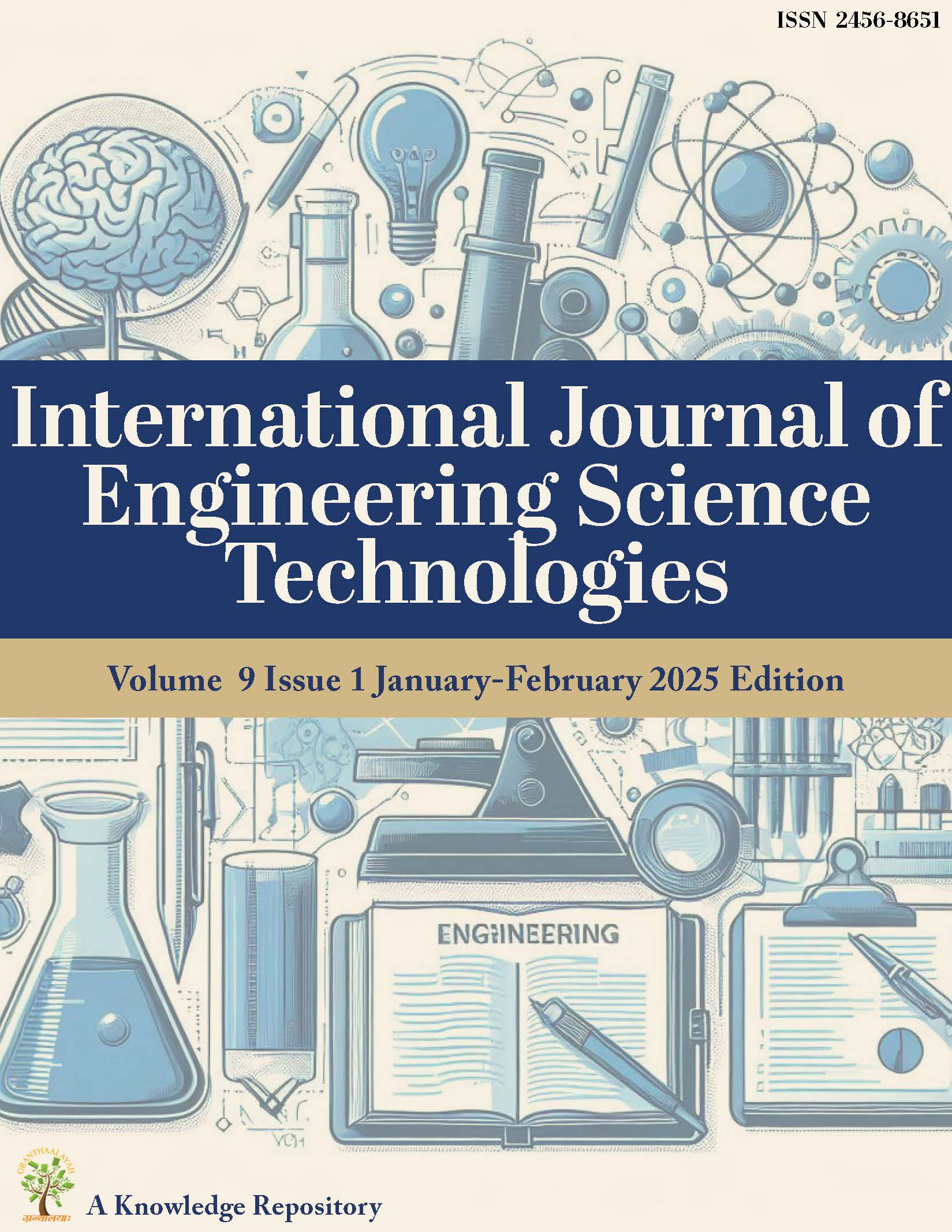INCLUSIVE DEVELOPMENT PROCESS IN THE PAKISTAN ECONOMY
DOI:
https://doi.org/10.29121/ijoest.v9.i1.2025.661Keywords:
Inclusiveness, Development and GrowthAbstract
Article focuses mainly on the inclusivity of Pakistan's economy's development and growth processes. The study presents the ideas behind inclusive growth and the inclusive development This aindex, as well as how they apply to established, emerging, and particularly Pakistan economy. The current body of literature focuses on factors that influence economic growth and strategies to improve it. Nonetheless, this ignores the benefits of growth for society. In prior decades, the distribution component of economic progress was disregarded. Consequently, the world is unable to reap the rewards of economic expansion. The Asian Development Bank's 2011 inclusive development and growth index is used in this study. To find out if Pakistan's economic expansion offers equitable chances to all members of the populace. The performance of the inclusive growth index's of sixteen indicators were evaluated from 1978 to 2014. The paper's conclusion demonstrates that inclusive growth in Pakistan is generally mediocre. In Pakistan, inclusive growth is on the rise. In Pakistan, distributive development strategies can be used to promote inclusive development while also accelerating economic growth in an equitable manner.
Downloads
References
Ahmed, V., & Rashid, A. (1984). Basic Economic Indicators, 1947-82. In Management of Pakistan Economy, 1947-82. HEC/UGC Monograph Series in Economics. Oxford University Press.
Ali, F., & Son, H. (2007). Defining and Measuring Inclusive Growth: Application to the Philippines. ADB Economic and Research Department Working Paper Series, 46.
Ali, I. (2007). Inequality and the Imperative for Inclusive Growth in Asia. Asian Development Review, 24. https://doi.org/10.1142/S0116110507500060
Ali, I., & Yao, X. (2004). Pro-poor Inclusive Growth for Sustainable Poverty Reduction in Developing Asia: The Enabling Role of Infrastructure Development. ERD Policy Brief Series. ADB, 27.
Anand, R., Mishra, S., & Peiris, S. J. (2013). Inclusive Growth: Measurement and Determinants. IMF Working Paper, WP/13/135. Retrieved from http://www.imf.org https://doi.org/10.5089/9781484323212.001
Anwar, M. M., Khan, S. J. I., & Khan, G. Y. (2018). Investigating the Inclusiveness in the Economic Growth of Pakistan. International Review of Humanities and Scientific Research, 446-458.
Asghar, S., & Javid, S. A. (2008). On Measuring Inclusiveness of Growth in Pakistan. The Pakistan Development Review, 50(4), 879-892.
Avakov, A. V. (2017). Two Thousand Years of Economic Statistics, Years 1-2012: Population, GDP, and PPP, and GDP per capita, volume 1, by rank. New York, NY: 30.12.2018.
Barro, R. J. (1996). Democracy and Growth. Journal of Economic Growth, 1(1), 1-27. https://doi.org/10.1007/BF00163340
Calderón, C., & Servén, L. (2004). The Effects of Infrastructure Development on Growth and Income Distribution. Annals of Economics and Finance, 10(15), 3350-3400. https://doi.org/10.1596/1813-9450-3400
Cervellati, M., & Uwe, S. (2014). Civil Conflict, Democratization, and Growth: Violent Democratization as Critical Juncture. The Scandinavian Journal of Economics, 116(2), 482-505. https://doi.org/10.1111/sjoe.12054
Chistik, O. F., & Eliseev, V. A. (2019). The Index of Inclusive Development in Formation of the New Concept of Economic Growth. Samara State University of Economics, Samara, Russia, SHS Web of Conferences, 62, 05002. https://doi.org/10.1051/shsconf/20196205002
Dabla-Norris, E., Kochhar, K., Suphaphiphat, N., Ricka, F., & Tsounta, E. (2015). Causes and Consequences of Income Inequality: A global Perspective. IMF Staff Discussion Note No. 15/13. Washington, DC: International Monetary Fund. https://doi.org/10.5089/9781513555188.006
Deeming, C., & Smyth, P. (2017). Social Investment, Inclusive Growth that is Sustainable, and the New Global Social Policy. In C. Deeming & P. Smyth (Eds.), Reframing global social policy: Social investment for sustainable and inclusive growth (44). Bristol: Policy Press. https://doi.org/10.56687/9781447332503-006
Fosu, A. K. (2017). Growth, Inequality, and Poverty Reduction in Developing Countries: Recent global evidence. Research in Economic, 71(2), 306-336. https://doi.org/10.1016/j.rie.2016.05.005
Francisco, L., & Batiz, R. (2002). Democracy, Governance, and Economic Growth: Theory and Evidence. Review of Development Economics, 6(2), 225-247. https://doi.org/10.1111/1467-9361.00151
International Organization for Migration. (2018). World Migration Report 2018. Retrieved from https://publications.iom.int/books/world-migration-report-2018
Kakwani, N., & Pernia, E. (2008). What is pro-poor growth? Asian Development Review, 16(1), 1-22. https://doi.org/10.1142/S0116110500000014
Khuja, A. S. (2010). Poverty and inequality. Pakistan Economy (Book).
Klasen, S. (2010). Measuring and Monitoring Inclusive Growth: Multiple Definitions, Open Questions, and some constructive proposals. 12(8), 2071-9450.
Kuznets, S. (1950s and 1960). Kuznets Hypothesis. Retrieved from https://en.wikipedia.org/wiki/Kuznets-hypothesis
Lucas, R. E. (1988). On the Mechanics of Economic Development. Journal of Monetary Economics, 22(1), 3-42. https://doi.org/10.1016/0304-3932(88)90168-7
Mankiw, N. G., Romer, D., & Weil, D. N. (1992). A Contribution to the Empirics of Economic Growth. Quarterly Journal of Economics, 107(2), 407-437. https://doi.org/10.2307/2118477
Marrero, G. A., & Rodriguez, J. G. (2013). Inequality of Opportunity and Growth. Journal of Development Economics, 104, 107-122. https://doi.org/10.1016/j.jdeveco.2013.05.004
Mason, A., Lee, R., & Jiang, J. X. (2016). Demographic Dividends, Human Capital, and Saving. The Journal of the Economics of Ageing, 7, 106-122. https://doi.org/10.1016/j.jeoa.2016.02.004
McKinley, T. (2010). Inclusive Growth Criteria and Indicators: An Inclusive Growth Index for Diagnosis of country progress. Working Paper Asian Development Bank, 14, 2071-9450.
Min, Y., & Xiaolin, W. (2011). China's Inclusive Growth: Measurement and Evaluation. International Poverty Reduction Center in China. School of Economics, Peking University, 344-367.
Osmani, S. R. (2008). The Demands of Inclusive Growth: Lessons from South Asia. The Mahbub Ul Haq Memorial Lecture. The Pakistan Development Review, 47(4), 381-402.
Pasha, A. H. (2007). Inclusive growth: The Asian experience. Unpublished Paper, 1-20.
Pasha, A. H. (2017). Development Priorities for the Government. Development Advocate Pakistan, 5(3).
Persson, P., & Tabellini, G. (1992). Growth, Income Distribution, and Democracy. European Economic Review, 36(122), 593-602. https://doi.org/10.1016/0014-2921(92)90117-F
Qureshi, M. G., & Ahmed, E. (2012). The Interlinkage between Democracy and per Capita GDP: Across Country Analysis. PIDE Working Paper, 85.
Rauniyar, G., & Kanbur, R. (2010). Inclusive Development: Two Papers on Conceptualization, Application, and the ADB Perspective. January Draft. Independent Evaluation Department, ADB, 9, 1-110.
Ravallion, M. (1997). Can High-Inequality Developing Countries Escape Absolute Poverty? Economic Letters, 56(1), 51-57. https://doi.org/10.1016/S0165-1765(97)00117-1
Ravallion, M., & Chen, S. (2003). Measuring pro-poor Growth. Economics Letters, 78(1), 93-99. https://doi.org/10.1016/S0165-1765(02)00205-7
Romer, P. (1987). Crazy Explanations for the Productivity Slowdown. NBER Macroeconomics Annual, 163-210. https://doi.org/10.1086/ma.2.4623715
Solow, R. M. (1956). A Contribution to the Theory of Economic Growth. Quarterly Journal of Economics, LXX(1), 94-65. https://doi.org/10.2307/1884513
Thorat, S., & Dubey, A. (2012). Has Growth Been Socially Inclusive During 1993-94-2009-10? Economic & Political Weekly, 47(10), 43-54.
Tirmazee, A. Z., & Haroon, M. (2015). Growth in Pakistan: Inclusive or not? The Pakistan Development Review, 54(4), 335-350.
World Economic Forum. (2018). Inclusive Development Index (IDI), Future of Economic Progress, IDI. Published: 22 January 2018.
World Population Prospects: The 2017 Revision. (2017). The world Population Prospects: The 2017 Revision Provides a Comprehensive Review of Global Demographic Trends and Prospects for the Future. Retrieved from http://www.un.org/development/desa/publications/world-population-prospects-the-2017-revision.html
Zaidi, S. A. (2005). Poverty and Inequality. In Issues in Pakistan Economy (Book). Oxford University Press.
Zakria, M., & Fida, B. A. (2006). Democratic Institutions and Variability of Economic Growth in Pakistan: Some Evidence from Time Series Analysis. The Pakistan Development Review, 48(3), 269-289.
Published
How to Cite
Issue
Section
License
Copyright (c) 2025 Sardar Javaid Iqbal Khan, Sardar Adil Iqbal Khan, Muhammad Imran Khan, Rashid Nasir, Rizwan Ayub

This work is licensed under a Creative Commons Attribution 4.0 International License.





















